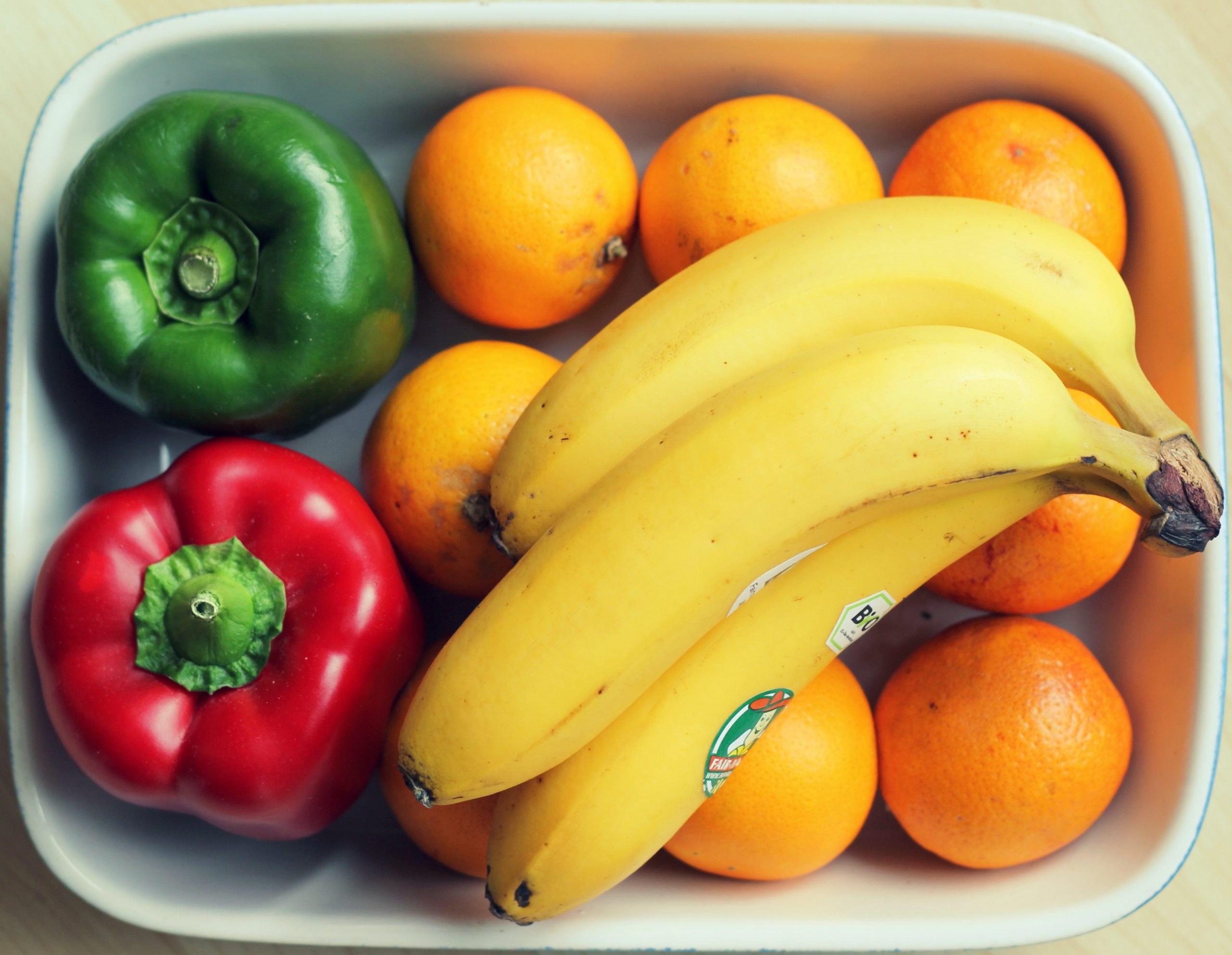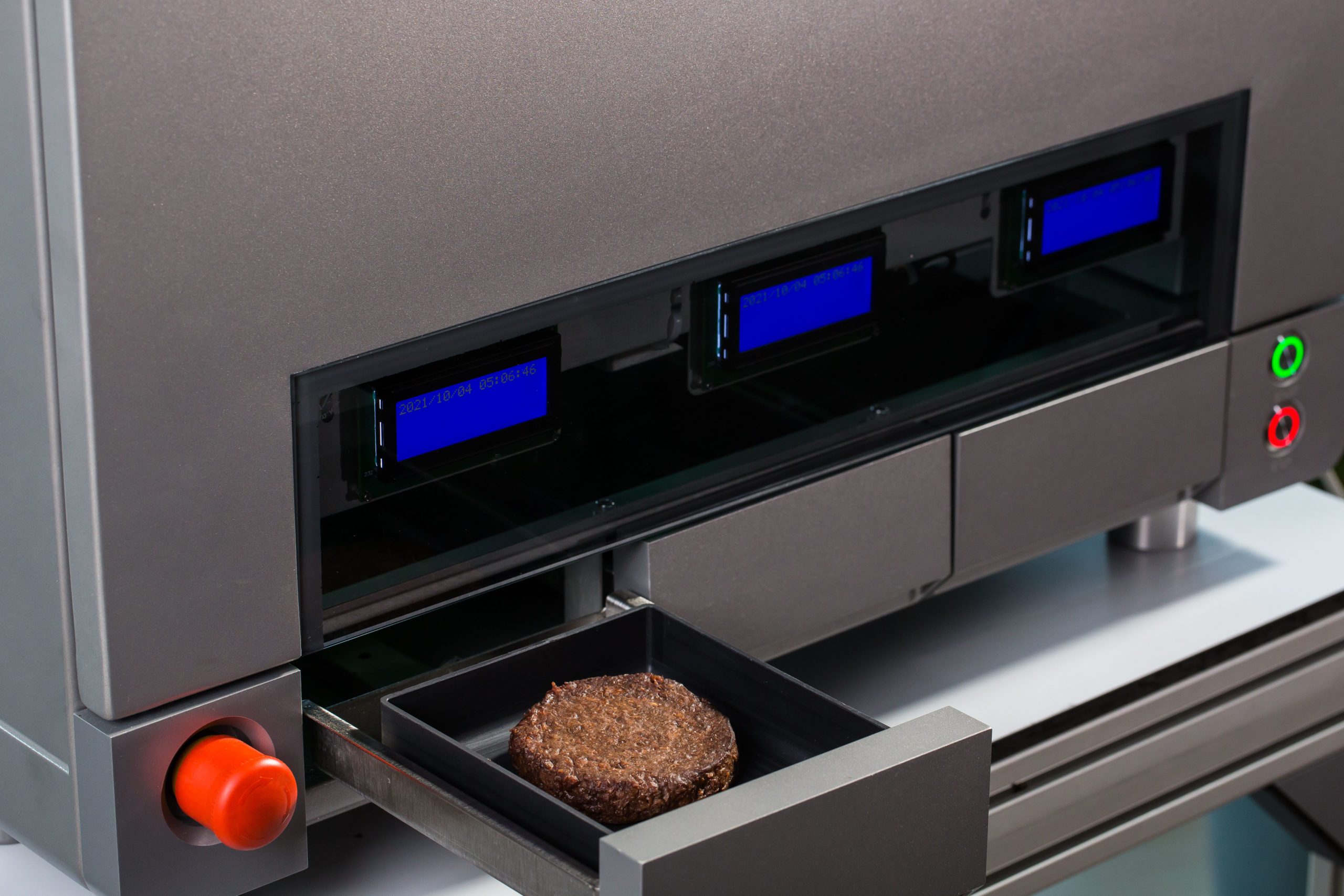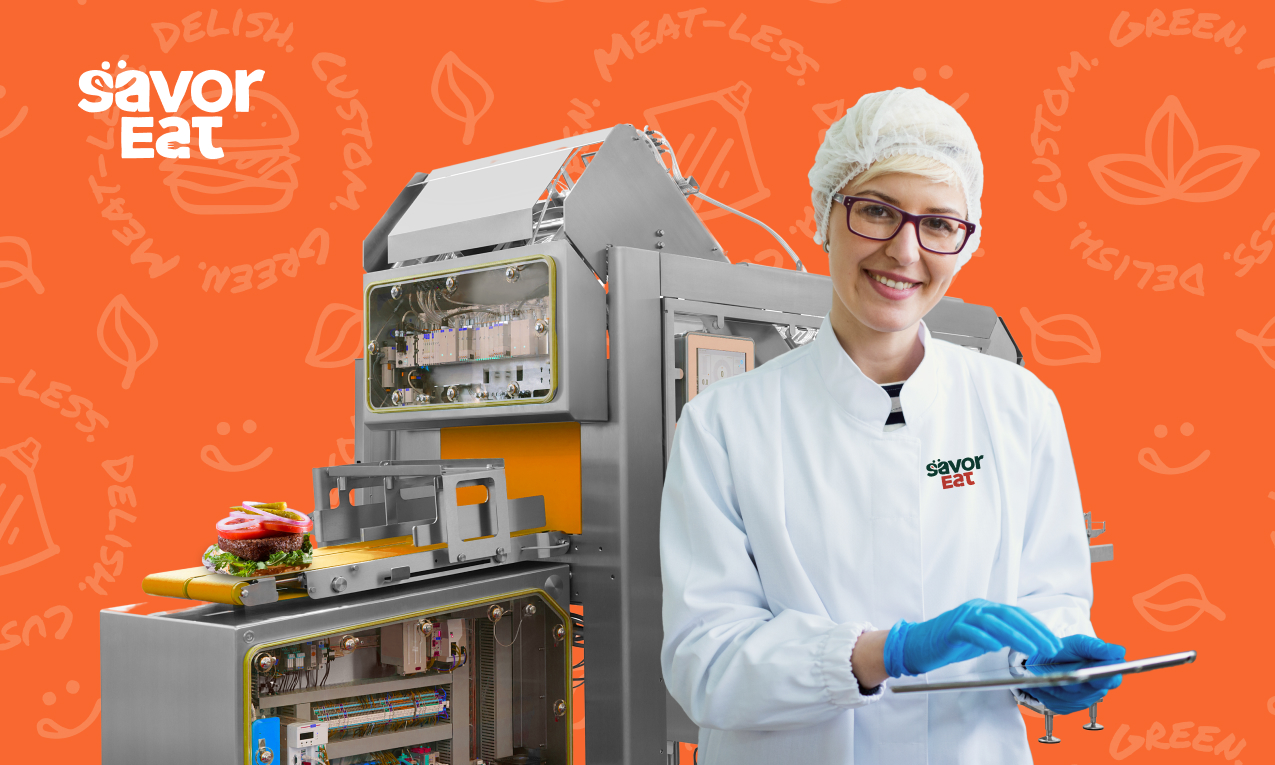From refrigerators to microwaves, food technology plays a major role in modern life: It helps make the modern lifestyle manageable and access to food convenient.
The global food tech market is on a steady growth journey with a 2027 valuation predicting the market to reach $342.52 billion.
Latest developments in food industry technology have taken a more direct approach to solve consumer and industry problems. From autonomous drones to AI-powered robots, technology is revolutionizing the food industry, and fast! And industry players must do everything in their power to stay on top of the game.
Food Industry and the Technological Revolution
Food industry technology is the use of technological innovation to develop sustainable and efficient food systems.
From faster production and packaging processes to lower operational costs and reduction in workplace accidents, technology helps resolve some of the major obstacles of the food industry.
Importance of Technology in the Food Industry
The food industry has been experiencing massive problems since before the pandemic and more post-pandemic. From world hunger to food shortages and climate shocks, global food insecurity is rising.
Technology forms a key part of future development in the food industry and provides a viable solution to a majority of these issues. Some of which have been long plaguing the food industry.
Here are reasons why technological advancements are growing increasingly important for the food industry as a whole.
Improvement of Produce Quality
There was a time when companies could easily get away with using any ingredients in their food products. Today, consumers want to know where their food comes from and the nutritional value it provides.
This creates pressure on businesses to consider ingredients and processing methods carefully. Every part of food production, processing, and delivery is under scrutiny. This makes it important for manufacturers to come up with solutions to produce quality food while minimizing their carbon footprint.
The role of technology in improving the quality of produce might take many forms such as:
- Finding alternate packaging (edible, bacteria-fighting, micro packaging)
- Ensuring traceability of products
- Monitoring freshness
- Quality detection
- Next-gen food and alternative ingredients
From ensuring the food reaches the end customer quickly to making sure it retains its nutritional value, there’s a lot of scope for technology to support improved product quality.

Striving Towards a Sustainable Future
The introduction of food industry technology ensures sustainability is a central part of all development strategies.
The purposes for implementation of technology to achieve sustainability goals include:
- Finding alternative ingredients with a low carbon footprint
- Optimizing crop yield
- Precision farming
- Food waste reduction and surplus management
- Prolonging shelf life
Optimization of Energy Usage
Food industry technology allows manufacturers to produce food efficiently for the growing needs of the population. This strategy sees a lot of overlap with the sustainability strategy.
Optimization of energy and resources using technology can involve:
- Shortening the supply chain
- 3D printing
- Farm-to-table
- Virtual and ghost kitchens
- Weather monitoring
- Alternative packaging
New and Upcoming Technologies in the Food Industry
Based on the need of the hour, here are some of the new and upcoming technologies in food industry technology. Some of these are already in use, revolutionizing the food industry space.
-
Artificial Intelligence (AI)
AI makes up one of the largest trends in the food industry, with a wide range of applications that often overlap with other trends.
It’s the central resource in food industry applications involving:
Supply Chain Monitoring and Management
The food industry’s supply chain is a complex machine that today includes end-to-end sectors from food production and processing, to packaging and retail/delivery.
With the recent pandemic-induced disruptions in supply chains, it is evident that there’s an increasing demand for a flexible and transparent supply chain.
AI-based tech does easy work of the big data involved in supply chain management, while allowing better operational monitoring and control. The same tech also enables restaurants and retailers to manage their inventory efficiently and make data-driven decisions.
Food Transportation
Food losses during supply chain transportation are a pressing concern. And over 14% of these losses happen before the food reaches the retailer.
AI allows stakeholders to monitor conditions of transport and manage them to maintain suitable temperature and humidity conditions. Thereby, reducing the amount of food loss during transit.
Food Processing
From food preparation and processing to preservation and packaging, food processing involves many tasks. Tasks that AI is the perfect alternative for, as it has capabilities that allow it to:
- Work efficiently at faster speeds
- Undertake high-risk jobs in extreme conditions
- Offset concerns about food and employee safety
Food Delivery
With a compound annual growth rate (CAGR) of 11.5%, global online food delivery opens up another demand gap that’s difficult for humans to fill.
That’s where AI comes to the rescue.
With AI-powered autonomous vehicles and ghost kitchens, the potential of the food delivery capacity of restaurants has multiplied.
Maintenance of Processing Equipment
The health of your processing equipment is of crucial importance in food processing operations. So far the task of maintaining this equipment fell onto humans, which makes it prone to errors. This resulted in frequent breakdown of the machines, which then translated into loss of productivity and time.
Leaving both the scheduling of maintenance and ensuring its application to AI tech provides the most efficient solution.
-
Internet of Things (IoT)
IoT includes all technology that connects to the internet.
In the food industry, IoT technology involves:
- Production processes
- Shipping processes
- Optimized logistics costs
- Monitoring of and maintaining humidity and temperature conditions
- Stock management
- Problem-solving
- Ensuring food safety and quality assurance
- Equipment maintenance
- Smart refrigeration
- Energy consumption
- In-oven designing
- Data analytics report
- Monitoring customer behavior and demand
-
Robotic Technology
Robotic technology has been growing for a long time due to a consistently growing demand for increased productivity, especially in the food sector. But the pandemic is what truly bought out the real benefits of robotic technology.
Check out some of the latest developments in robotic technologies:
- Robotic arms for chopping, cutting, slicing, and decorating
- Thermal scanning drones
- Hamburger assembling robotic arms
- Robotic cleaners
- Packaging robots
- Soil analyzing robots

-
3D Food Printing
Manufacturing customized food products that change shape, color, ingredients, taste, and more, are on the rise.
3D food printing is becoming increasingly popular due to its accommodating nature that allows the use of sustainable ingredients in making delicious dishes. Its most important application is in healthcare and elderly care, where the patients need soft foods that are easy to chew but also provide all the necessary nutrients.
From pizzas and steaks, to cakes and spaghetti, applications of 3D food printing are improving by the day.
-
Nanotechnology
Nanotechnology in the food industry is a useful tool that can help enhance food safety and improve production quality. Its application is common in detecting pathogens in food and boosting the shelf life of packaged food.
-
Smart Sensor Technology
Smart sensor technology allows farmers and inventory managers to monitor their crops/food products remotely, and with ease. It is also in use in combination with other technologies like autonomous vehicles, IoT systems, robotic technology, AI, and more.
Sensor tech sees plenty of applications in restaurants and point-of-services like vending machines, water dispensers, and more.
-
Data Collection, Analysis, and Utilization
From farming to end-of-line food services, data makes one of the biggest technological advancements of the century.
Depending on the scale, data can come from a lot of places and be utilized in different ways too. Here are some examples of data that are central to the food service industry as we know it:
- Weather prediction
- Demand forecasting
- Menu analysis
- Waste management and reduction
- Supply chain disruptions
- Recipe creation
- Inventory management
- Grain bin monitoring
- Consumer demand shifts
- Changing consumer preference analysis
-
Autonomous Vehicles and Drones
Autonomous vehicle and drone technology also work in combination with IoT and AI-based technology.
Such tech is more useful in the agricultural and delivery sectors than others. Its applications include GPS tracking systems, satellite/ aerial imaging, temperature and moisture sensors, and more.
These devices enable easy monitoring of soil health, crop yield and health, weather patterns, location mapping and so on. It assists farmers in planning operations on their phones in order to optimize yield and minimize damage.
Examples of Food Industry Technologies
Copia – Food Waste Management
Copia provides food donation, waste tracking, and reduction services to help businesses reduce overall waste generated. Their services are easily accessible via their app, which also helps businesses:
- Track surplus trends
- Access reports to make better purchase decisions
- Access enhanced tax deductions
Pudu Robotics – Robotic Technology
Pudu Robotics is a food tech startup using robotic technology and AI tech to make cleaning, delivery, and reception robots.
SavorEat – 3D Meat Printing
SavorEat utilizes 3D food printing technology and automation to help businesses produce personalized plant-based 3D meat that’s just as delicious as the real thing.
MarginEdge – Restaurant Management Solutions
MarginEdge is a software solution provider for restaurants that utilizes automation and AI-based tech. Their solutions enable:
- Automated invoice processing
- Cost management
- Inventory management
- Restaurant recipe management and menu analysis
- Back office efficiencies (POS and accounting integration, ordering, bill pay, etc.)
Coco Delivery – Food Delivery
Coco is a remotely-powered delivery robot that partners with local food service businesses to enable contactless deliveries.
Sunday – Restaurant Digitization
Sundayapp is a fully-integrated solution that digitizes ordering and paying at restaurants. It uses QR-based tech along with AI and IoT technologies.
DayTwo – Personalized Nutrition Recommendations
DayTwo offers individualized nutrition solutions for chronic conditions like clinical obesity, prediabetes, and diabetes. Their products utilize a combination of AI-based algorithms and microbiome data analysis technology.
Bevi – Smart Water Dispenser Systems
Based in Boston, Bevi develops smart water dispenser systems powered using IoT and sensor technology.
Miso Robotics – Robotic Technology
Miso Robotics’ range of robots offers next-gen automatic frying, flipping, seasoning, and finishing solutions. Their products ensure food safety while taking over the high-risk jobs in your kitchens.
Glovo – Hyper-local Delivery App and Services
Glovo is a Spanish tech-based startup offering to connect its partners across the globe with their local consumers. Their app enables users to find all kinds of local businesses to source essentials.
Plate IQ – Invoice Automation
Plate IQ offers automation solutions for the entire invoice lifecycle across a wide range of industries. Their solutions enable invoice automation, vendor payment scheduling, virtual card payments, digital filing, and more.
Dishcraft – Dishware Cleaning Services
Dishcraft uses AI and robotic technology to offer dishware cleaning services to restaurants while reducing waste generated from disposable dishware. Their platform schedules pickup and delivery of dishware and ensures safe dishwashing using automated robots.
Manna – Drone Delivery
Dublin-based foot tech startup Manna offers online drone delivery services. They partner with local businesses to provide instant delivery of essential goods to locals in need.
Get ResQ – Restaurant Repair and Maintenance Management
ResQ is an innovative marketplace and management platform for restaurant repairs and maintenance services. The platform connects restaurants with repair and maintenance service providers while also helping restaurants stay on top of their management schedules.
LahakX – Precision Aerial Spraying
LahakX is an agri-tech solutions provider offering precision chemical spraying using data and autonomous drones.
Smart Robot Co. – Compact Robotic Technology
Smart Robot Co. is a provider of farming robotic solutions that can monitor, treat, and plant crops autonomously. Their compact devices reach remote, inaccessible areas of farms and collect data to allow farmers to improve their crop’s health and yield.
Their devices combine robotics and AI technology.
Kitopi – Cloud Managed Kitchen
Dubai-based food tech startup Kitopi is a managed cloud kitchen platform. Their smart kitchen operating system (SKOS) enables restaurants to open delivery-only locations using big data and AI technology.
How to Use Technology to Solve Problems in the Food Industry?
The food industry sees many more problems than the rate at which solutions are developed. However, new food industry technology has the potential to resolve most of the pressing ones as follows:
Food Waste and Shrinkage
Food waste is a huge loss for every market player involved in the food business. It is also becoming a crucial factor in the loss of customers.
From the reduction of waste at the source and during processing to finding ways to better handle food waste after its creation, there’s a lot of focus on waste reduction.
Waste reduction software that utilizes real-time food usage and waste tracking can help offset a large portion of waste from your restaurants’ operations. It can also provide you with information about changing trends in consumer behavior to optimize ordering only the necessary ingredients.

Inventory management software can also work to calculate minimum order quantities.
If you’re a distributor or farmer, deploying a combination of autonomous vehicles, sensors, and IoT technology can give you more control over the condition of your product/crops.
Robotic technology can also help offset waste generated by reducing the loss of food during various processing, packaging, and restaurant-level activities.
Equipment Breakage
Food equipment damage can be costly for your business. Training human staff members also doesn’t seem to be enough to reduce improper handling or maintenance issues.
Both tasks are easy for robotic and AI-based tech to undertake. From scheduling maintenance breaks and ensuring optimum operations, to proper and consistent usage and handling of equipment, a combination of these technologies can do it all.
Production Delays and Inconsistencies
Slow or delayed production cycles and inconsistent processes can result in the loss of valuable products, and ultimately consumers.
With AI and robotic technology, you can not only mitigate risk factors causing production delays, but also improve consistency in your operations.
Workplace Injuries and Accidents
Some of the tasks involved in food production, packaging, and delivery are too dangerous for humans. However robotic technology is perfectly suited for performing these tasks. These include retrieving products from higher shelves to working in extreme temperatures. Robots can also deal with higher workloads consistently and perform tasks much faster, thereby, increasing your overall operational productivity.
Reduced Customer Satisfaction
Whether it is predicting consumer demand or handling rush hour demand, customer satisfaction has always been a key aspect in food-related businesses.
With the help of AI algorithms and data utilization software systems, you can now not only gather data on various factors but also make sense of it to deliver satisfactory service to your customers.
Other solutions to improve customer satisfaction include:
- Online food delivery
- Digital menus
- Scan and go check-out systems to move lines faster
- Digital payment systems
- Mobile apps
- Identification of valid vs. fake customer requests
- Chatbots to streamline and simplify customer interactions
Cost Savings
From inventory management software to processing and packaging robots, technology can help businesses improve productivity to generate more profits using the same resources. They can reduce costs associated with food waste and analyze consumer trends to help you invest in practices, menu items, and services that are in demand.
Enhance Quality and Food Safety
Food safety is a priority for every sector in the food industry. Some of the tech helping manage and improve the quality of food includes:
- AI-based predictive equipment maintenance
- Automated monitoring sensors and alerts
- Food safety practices tracking software and cloud-based apps
- Automated food labeling
- Light-based decontamination
Battling Crop Pests and Pathogens
Pests and pathogens can cause substantial damage to crops of all kinds. Pests alone cause between 10.1-28.1% of losses in wheat crops.
Technological advancements can help farmers identify insects and pests affecting crops and allow immediate action to be taken to minimize losses.
Some of the technologies at use in such applications include:
- Soil and crop sensors
- Computer vision and AI data analysis
- Optical sensors
- Machine learning (ML) algorithms
- Thermal imaging
- AI-controlled indoor farm systems
- Drone and satellite monitoring
- AI-linked precision spot insecticide spraying
Offsetting Labor Shortages
Labor shortages affect the food industry at all levels, from farms and manufacturing, to restaurants and delivery services.
Most of these labor shortages can effectively be replaced using robotic technology. Other technological solutions to labor shortages include:
- Ordering and paying at table terminals
- Self-order kiosks
- Kitchen display screens
- Handheld payment scanners
Driving Operational Efficiency and Resource Optimization
Food industry technology allows humans to focus on creative insight-based tasks- leaving the repetitive and monotonous tasks to robots and AI-based technologies.
AI-based technologies are also better equipped at processing large amounts of data in shorter time frames. This ensures the resources of the organization are optimized wisely.
Commonly Used Technologies in Fast Food Restaurants
From the high-functioning kitchens to the super convenient order processing, fast-food restaurants are the best example of optimized operations. And technology helps them deliver everything they want efficiently and with ease.
Here are some technologies that help fast food restaurants deliver:
- Mobile POS tablets
- Card readers and payment technology
- Real-time inventory tracking
- Mobile apps
- Digital order-ahead/ self-ordering
- Kitchen display screens
- Digital menu boards
- Reservation and scheduling software
- Drone food delivery systems
- Chatbots
- Analytics reports
- Geofencing software
- POS integrations
Final Thoughts
The role of technology in the development of the food industry is huge. Both businesses and investors are quickly catching up with upcoming advancements and trying to ensure that their business doesn’t lag behind when it comes to serving rising demands and meeting enhanced customer needs.
Despite the problems food industry technology solves, there are still problems with the large-scale adoption of new tech.
These problems are mainly related to the high costs involved in acquiring and deploying such technologies along with the time and resources spent in educating staff about the tech.
It suffices to say that rapid and large-scale adoption of these technologies will take time. As will further lowering of costs to make the tech accessible to businesses worldwide. Not to mention investment from the businesses in training their staff on using the technologies.
After all, the adoption of new food industry technology will still require human-centered management.





